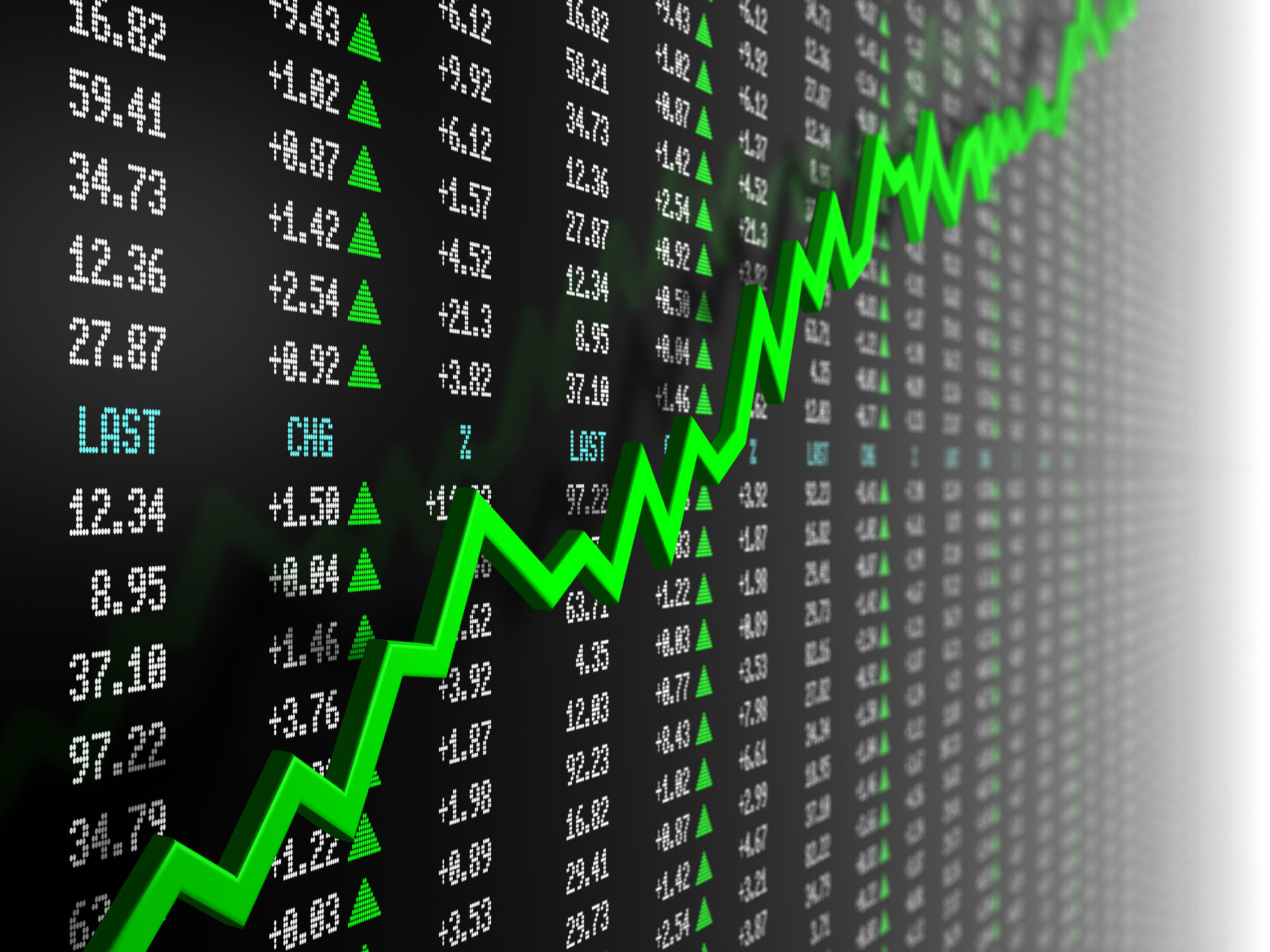Buffered ETFs: What Are They And Should You Invest in One?
Buffered ETFs help mitigate stock market losses, but investors will sacrifice some gains. Here's why.


If it's true that the psychological pain of losing money is twice as great as the pleasure you feel when you make a profit, then there's an exchange-traded fund (ETF) for that. A newer class of ETFs, called defined-outcome or buffered ETFs, limit your losses in the stock market in exchange for giving up some of your potential gains.
And these funds are growing in popularity. The first defined-outcome ETF launched in 2018. Today, there are more than 200 funds, with $43 billion in assets under management, according to ETF.com.
Interest in buffered ETFs ramped up after both stocks and bonds turned in terrible returns in 2022, and investors sought ways to build some defense into their portfolios. But the ETFs also appeal to risk-averse investors who want to keep a toe in the stock market.

Sign up for Kiplinger’s Free E-Newsletters
Profit and prosper with the best of expert advice on investing, taxes, retirement, personal finance and more - straight to your e-mail.
Profit and prosper with the best of expert advice - straight to your e-mail.
Word is, recent and soon-to-be retirees, who are staring down a possible 30-year stretch for their money to last, are interested.
"You can't maintain your standard of living for that long without earning equity-like returns," says Matt Collins, head of ETFs at PGIM Investments. "Some are willing to take some risk to get that exposure, but not a lot. And if you can offer them a narrower range of outcomes, it gets them a little closer to being comfortable with exposure to large-company U.S. stocks."
Buffered strategies aren't new. These approaches have existed for years in mutual funds and in annuities and other products sold by insurance companies. But the ETF versions are accessible to all investors.
Innovator and First Trust were the first firms to offer buffered ETFs; AllianzIM, Pacer and TrueShares entered the market in 2020 and 2021. More-recent joiners include iShares, PGIM Investments and Fidelity.
What are buffered ETFs exactly?
Trouble is that these actively managed strategies require a lot of explaining. They're not typical stock or bond funds. In fact, they're something in between, more like alternative investments.
"Investors need to reach a level of understanding to make sure they have the right expectations," says Ryan Issakainen, First Trust’s ETF strategist. That’s part of the reason the bulk of defined-outcome ETF buyers these days are financial advisers who purchase them on behalf of their clients, not individual investors. And that might be a good thing.
Buffered ETFs come in a variety of risk-reward combinations. The majority offer a certain cushion on losses over a 12-month stretch in exchange for a give-back on gains. But others tweak the formula: Some allow you to capture more of the stock market's gains; others focus on downside protection. ETFs that let you hedge against stock losses and guarantee a payout — sort of like a dividend — have recently joined the mix, but we’ll address them at some other point (stay tuned).
"There's a super-wide array of ways to use these products," says Graham Day, chief investment officer at Innovator ETFs. "They can be used as a complement to a stock portfolio, other times as bond alternatives, or other times as an alternative-investment sleeve" that zigs when other parts of your portfolio zag.
Over the next few paragraphs, we'll explain how these funds typically work, walk you through the broad types of strategies available, and discuss their pros and cons. We've focused on ETFs for stock investors here. Returns and data are through February 3.
How do buffered ETFs work?
Most buffered ETFs are linked to the S&P 500 index of the biggest U.S. companies. The fund managers define how much protection to offer on the downside (the buffer) and set the limit on upside returns (the cap) by investing in options contracts, which allow them to buy or sell shares in an S&P 500 ETF at a set price on or before a certain date.
The most common type of buffered ETF has a 12-month outcome period. The range of returns possible over the period is defined by the options contracts the fund holds. At the end of the one-year period, the ETF rebalances by buying new options to ensure the promised buffer, which in turn resets the cap for the next 12-month period.
Typically, the downside protection is fixed, depending on the strategy, but usually ranges between 10% and 20%. How much you give up in upside gains depends in part on the amount of protection the fund offers. The bigger the down-market cushion, the smaller the potential gain. Market volatility and interest rates affect how high or low the cap on gains will be, too.
Here's an example. The Innovator S&P 500 Buffer ETF April (BAPR) aims to track the SPDR S&P 500 ETF Trust (SPY).
Investors who bought shares in BAPR at the start of April 2024 have a 9% buffer against losses. That means if SPY drops anywhere up to 9% over the 12-month period ending in March 2025, shareholders lose nothing. But losses beyond 9% are not protected. If SPY declines, say, 15% by the end of the 12-month period ending in March 2025, shareholders who bought BAPR in early April 2024 will suffer a 6% loss.
On the flip side, the potential 12-month return of the Innovator S&P 500 Buffer April ETF tops out at 18.3%. Any gains beyond that are forfeited. "These products do exactly what they say they're going to do," says Innovator’s Day. "That level of predictability – knowing what you’re going to get – is enormously powerful."
The pitfalls of buffered ETFs
Naturally, these strategies come with some caveats. Cost is one. Buffered ETFs charge an average expense ratio of 0.78%. That’s more than the typical 0.59% fee for actively managed diversified U.S. stock ETFs.
You need to time your purchase, too. It’s best to buy these funds within a week of the start of its 12-month stretch, just when the fund rebalances. In late June or early July, for instance, you’d buy a July-dated buffered ETF.
And plan to hold the ETF for at least the full year. For investors who don't buy at the start of the outcome period, the buffer and cap will shift depending on the broad market’s moves and the fund’s net asset value each day. It’s why you see these strategies issued in monthly varieties: Fund firms want to give investors buy-in options through-out the year. That said, these funds aren’t time deposits. You can get out at any point.
Finally, the buffer and the cap on any given ETF apply to its full outcome period. The outcome period of the April series of Innovator S&P 500 Buffer ETF is April 1, 2024, to March 31, 2025. If you’re buying and holding the fund, what happens in the interim is immaterial. All that matters is where the market stands at the end of the outcome period.
That’s what makes an investment in buffered ETFs more akin to a one-year bond you hold to maturity. "What we say we will deliver in a January defined-outcome ETF won't happen until December 31 – 12 months later," says PGIM's Collins. "And it’s a slow grind."
At the end of the 12-month period, when the fund rebalances by buying a new set of options, you may want to consider what to do next with the money in the fund. You can always do nothing. In that case, your assets will remain in the fund and automatically roll over to the next year-long period. But it's a good idea to review the new outcome parameters for the coming year. "That ongoing monitoring of the caps from year to year is something you have to stay on top of," says Collins.
Where to find the best buffered ETFs
The S&P 500 isn't the only index to get the buffered treatment. Innovator and First Trust offer defined-outcome ETFs tied to the Nasdaq index of stocks, the MSCI EAFE (which tracks foreign stocks in developed countries), the MSCI Emerging Markets Index for emerging market stocks and the Russell 2000 (a benchmark of small-cap stocks). Generally, those ETFs work in the same way as the 12-month defined-outcome funds that track the S&P 500.
But other twists of the defined-outcome formula are worth highlighting:
More upside. Some funds don’t come with caps on potential returns, which may appeal to investors more interested in growth than downside protection. For example, instead of accepting a percentage-point limit on potential returns, investors in TrueShares Structured Outcome ETFs can expect to reap roughly 75% to 80% of the S&P 500’s price returns over any given 12-month period – no matter how high the index climbs.
For example, the TrueShares Structured Outcome January ETF (JANZ), which has a 12-month outcome period that starts in early January, returned 18.1% in 2024, or nearly 73% of the S&P 500's 25.0% price return. "Over the long run, what you miss on the upside is as equally damaging to a portfolio as a drawdown," says Michael Loukas, chief executive of TrueMark Investments, the firm behind TrueShares ETFs. The TrueShares Structured Outcome ETFs aim to offer downside protection of 10%.
Industry insiders call these strategies "uncapped" defined-outcome ETFs. In the uncapped version from AllianzIM, investors give back the first three percentage points of gains but pocket any advances beyond that. So if the broad market climbs 4%, you earn 1%, but if the market rockets 50%, you make 47%. The firm's first uncapped defined-outcome ETF, AllianzIM U.S. Equity Buffer 15 Uncapped Appreciation (ARLU), launched in March and offers a 15% buffer on losses.
A bigger cushion. Almost all buffered ETFs offer some downside protection, but most won't fully protect against severe bear markets. There are exceptions, but they're relatively new, so they have little track record.
Among the exceptions is a group of funds from Innovator called Equity Defined Protection ETFs. They aim to offer 100% protection against losses, before fees and expenses, for two years. The price for that protection, of course, is a lower potential return. The oldest of these funds, Innovator Equity Defined Protection ETF 2 Year to July (TJUL), launched in July 2023, and the maximum return that investors can expect over the two-year period is 16.6%, cumulative, before fees.
AllianzIM shrinks the outcome period, which can work in your favor in up markets. For example, the AllianzIM U.S. Large Cap 6 Month Floor5 April/October (FLAO) limits losses to no more than 5%, but it rebalances every six months. There's still a cap on gains. For investors who bought the April/October fund when it reset in early April, the gains are capped at 8.31%. AllianzIM's two uncapped funds launched this year, so they have almost no track record. We'll keep our eye on them.
An all-in-one. Some firms roll a series of monthly defined-outcome ETFs into one fund. But the end result is a less predictable outcome. "The fund of funds ETF doesn't offer a defined outcome, but the underlying holdings do," says First Trust's Issakainen. "You end up with something a little different, but ultimately the ETF is less volatile than the overall market, and that's what it's supposed to be."
First Trust's FT Vest Laddered Buffer ETF (BUFR), for instance, holds 12 defined-outcome ETFs – spanning 12-month holding periods starting in January through December – in equal stakes. All of the underlying funds offer a 10% buffer against losses in the S&P 500. The caps on gains range between 12.7% and 16.9%.
The Pacer Swan SOS Fund of Funds ETF (PSFF) takes a more active approach, opportunistically buying and selling monthly funds depending on market conditions. "If the market goes up a lot, the managers might sell a monthly series to move to a new series and increase their cap and bring the buffer up," says Sean O'Hara, president of Pacer ETFs.
Our verdict: These funds are solid low-volatility stock strategies. In 2022, when the S&P 500 lost 18.1%, the First Trust fund of buffer ETFs lost 7.7%; the Pacer fund, just 4.0%. But if predictable outcomes are what you seek, a fund of funds may not be the best option.
Note: This item first appeared in Kiplinger Personal Finance Magazine, a monthly, trustworthy source of advice and guidance. Subscribe to help you make more money and keep more of the money you make here.
Related Content
Get Kiplinger Today newsletter — free
Profit and prosper with the best of Kiplinger's advice on investing, taxes, retirement, personal finance and much more. Delivered daily. Enter your email in the box and click Sign Me Up.

Nellie joined Kiplinger in August 2011 after a seven-year stint in Hong Kong. There, she worked for the Wall Street Journal Asia, where as lifestyle editor, she launched and edited Scene Asia, an online guide to food, wine, entertainment and the arts in Asia. Prior to that, she was an editor at Weekend Journal, the Friday lifestyle section of the Wall Street Journal Asia. Kiplinger isn't Nellie's first foray into personal finance: She has also worked at SmartMoney (rising from fact-checker to senior writer), and she was a senior editor at Money.
-
 Trump’s Tax Cut Risks Your SNAP, Medicaid Benefits
Trump’s Tax Cut Risks Your SNAP, Medicaid BenefitsTax Cuts The GOP budget blueprint could slash lifesaving programs for millions of U.S. households.
By Gabriella Cruz-Martínez
-
 Can Trump Fire Powell? A Supreme Court Case Could Decide
Can Trump Fire Powell? A Supreme Court Case Could DecidePresidential posts threaten to overwhelm decades of precedent and tradition, whatever the nine justices decide.
By David Dittman
-
 Can Trump Fire Powell? A Supreme Court Case Could Decide
Can Trump Fire Powell? A Supreme Court Case Could DecidePresidential posts threaten to overwhelm decades of precedent and tradition, whatever the nine justices decide.
By David Dittman
-
 What Are AI Agents and What Can They Do for You?
What Are AI Agents and What Can They Do for You?AI agents promise to be the next big thing in artificial intelligence, but what exactly do they do?
By Tom Taulli
-
 Should You Buy an iPhone Now Before Tariffs Hit?
Should You Buy an iPhone Now Before Tariffs Hit?Looming tariffs can make an iPhone purchase seem urgent. Here's what to do if you need another phone but want to save money.
By Laura Gariepy
-
 SRI Redefined: Going Beyond Socially Responsible Investing
SRI Redefined: Going Beyond Socially Responsible InvestingNow that climate change has progressed to a changed climate, sustainable investing needs to evolve to address new demands of resilience and innovation.
By Peter Krull, CSRIC®
-
 Here's When a Lack of Credit Card Debt Can Cause You Problems
Here's When a Lack of Credit Card Debt Can Cause You ProblemsUsually, getting a new credit card can be difficult if you have too much card debt, but this bank customer ran into an issue because he had no debt at all.
By H. Dennis Beaver, Esq.
-
 33 Stocks That Could Rally 50% or More This Year
33 Stocks That Could Rally 50% or More This YearAnalysts say these S&P 500 stocks have at least 50% price upside over the next year or so.
By Dan Burrows
-
 Stock Market Today: Dow Drops 971 Points as Powell Pressure Ramps Up
Stock Market Today: Dow Drops 971 Points as Powell Pressure Ramps UpPresident Trump is increasing his attacks against Jerome Powell, insisting the Fed chair cut interest rates.
By Karee Venema
-
 When Should You Hand Over the Keys — to Your Investments?
When Should You Hand Over the Keys — to Your Investments?The secret to retirement planning? "The best time to hand over the keys is before you’ve realized you need to hand over the keys."
By Maurie Backman